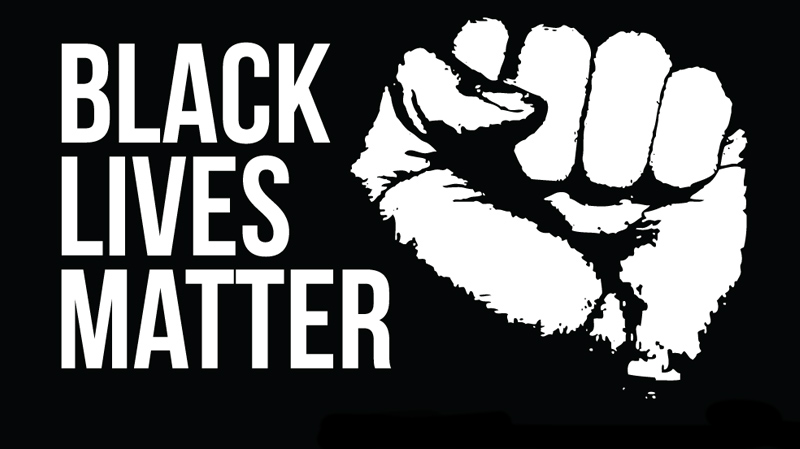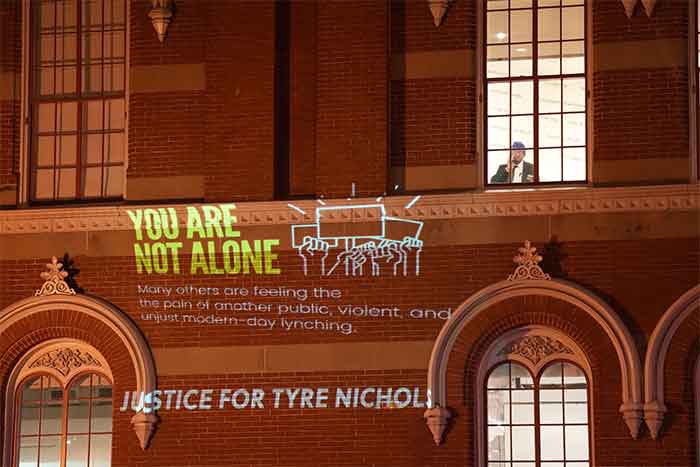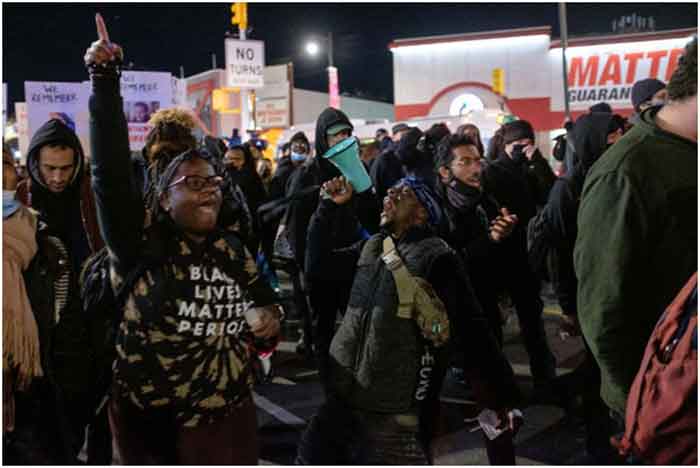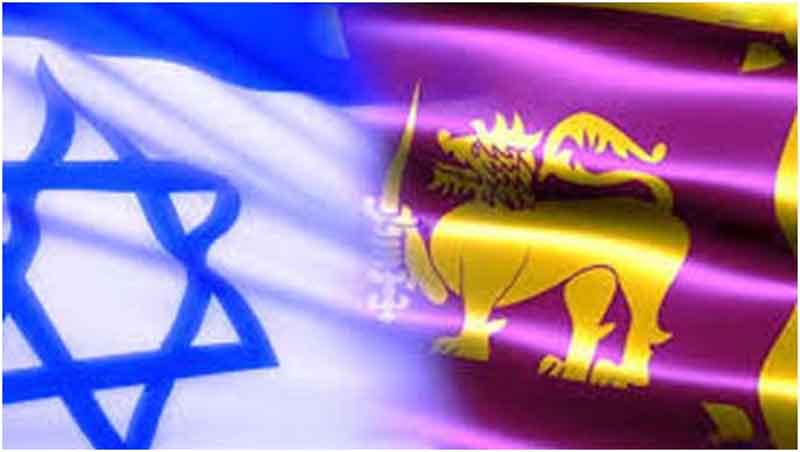
As the brouhaha over the murder of George Floyd, a middle-aged African American, by Derek Chauvin, a white Minneapolis police officer, assumes centre-stage in the United States and around the world prodding countries to introspect and refurbish their social-structures; it makes sense to us Indians to look for what it has in store for India. The two scourges which culminated in the said incident and which are now being protested against in the #BLACKLIVESMATTER protests throughout the world are those of discrimination (on the basis of race) and police brutality. And the presence of both of these evils in India is not dubious and their practice is a daily norm in our country.
A Prolix History of Discrimination
The fact that Indian history is full of incidents of discrimination and prejudice describes to a certain extent the present inequities in Indian society since the social-structure of a nation at a particular point of time finds its basis in the sui generis culture and history of its own. Indian history endorses a wide magnitude of discrimination which was prevalent in its society. Indeed, the practice of untouchability and the labeling of certain people as untouchables in ancient India had been one of the most stringent forms of discrimination practiced anywhere in the world. This immense quantum of the unfair treatment of the selective groups of people finds its explanation in the fact that the grounds of such maltreatment were more than one. People were looked down upon based on their caste, sex, religion, region, race, ethnicity and their ilk. What can depose the ubiquity of discrimination in the past Indian society more than the fact that the pièce de résistance of the immensely followed Varna System was its inherent discrimination on the basis of one’s caste? The inaccessibility of a certain people to the public wells, assigning jobs to people on the basis of their jati, exempting some people from reading Vedas considering them to be of low caste, the ghettoization of women in the domestic walls of the household, the unwanted exemption of Indians from being the members of administrative groups by the colonial legislations during colonial rule in the country, violence over people belonging to a particular religion, etc. are testimony to the prolix history of discrimination in India.
The ‘Legal’ Way Out
Our constitution-makers’ timely recognition of discrimination as one of the biggest stumbling blocks to the country’s prosperity and stature is quite laudable. Thanks to their sapience, we have had the right to equality articulated in our ‘grundnorm’ since the formation of India as a Republic in 1950. This ostensibly put an end to the prolonged reign of discrimination in our country, threw open the public spaces and employment opportunities to all and sundry irrespective of their religion, race, caste, sex or place of birth and defenestrated the untouchability making it an offence punishable by law. Instead of discrimination, we have had the provision of ‘special discrimination’ in the form of reservations to bring the victims of supercilious attitude at par with others. Some other anti-discrimination legislations of the country include Equal Remuneration Act, 1976 which guarantees the payment of equal remuneration to men and women alike; The Hindu Succession (Amendment) Act, 2005 which granted the similar rights to daughters as those were granted to sons; Scheduled Caste and Scheduled Tribe (Prevention of Atrocities) Act, 1989 which intended to prevent atrocities against marginalized communities, etc. Since we consider the precedents as one of the sources of law, the Supreme Court of India has also been instrumental in setting the anti-discrimination narrative in the country. The landmark judgment of Supreme Court in Navtej Singh Johar v. Union of India whereby Section 377 of IPC was pronounced to be unconstitutional ‘in so far as it criminalizes consensual sexual conduct between adults of the same sex’ is a perfect example of the “legal” establishment of toleration and abnegation of prejudice in India’s experiment of democracy.
The Haunting Realities
But, the true spirit of democracy does not lie in written words. Instead, it lies in the routine practice of the rule of law. Just as Civil Rights Act, 1964; Voting Rights Act, 1965 and Fair Housing Act, 1968 through which the ‘blacks’ were given full citizenship rights in America could not usher out the maltreatment and brutality meted out to their community, we, in our country also, despite being successful in codifying non-discrimination have drastically come a cropper in its practice. There are various reports which quote India’s miserable position on discrimination prevalent in its society. According to a research by the International Institute for Applied Systems Analysis published in Lancet Global Health in 2018, an average of 239,000 girls under the age of five die each year in India because of their gender. The norm of ‘equal remuneration for equal work’ still waits for its full application in India. A survey conducted by the International Labour Organization in 2017 pointed out the humongous gap between the earnings of men and women in India which was as huge as 30% in many cases. Combining the fact that a day rarely passes without the newspapers carrying the news of Dalits being killed with the research that various atrocities or other discriminatory behavior meted out to Dalits go unreported, one can imagine the quantum of prejudice being faced by them. According to an official statistics released in 2017, a crime is committed against Dalits every 15 minutes in India and six Dalit women are raped every day. Also the conviction rate for such crimes has declined substantially according to National Crime Records Bureau.
Another form of discriminatory behaviour which is a clout to the written word is the one being unleashed over the Muslims in our country. The brutality they face on a daily basis is not hidden from anyone. Their religion has now been started to be recognized with terrorism which has further intensified their alienation. The recent Citizenship Amendment Act adds fuel to the fire and deeply hurts the religious feelings of Muslims. It not only makes India reneging on its promise of keeping itself open to every religion but also serves as a blow to India’s secularism which forms a considerable part of its soft-power.
The other important branch which is also the most visible form of discrimination in present days is that against the people belonging to the community of LGBTQ. They are often harassed or bullied and to eschew this harassment they drop out of school or leave their jobs. The International Commission of Jurists, a non-governmental organization has found in its report that ‘educational and training opportunities are often denied to LGBTQ persons due to harassment, bullying and violence.’ Although in 2014, the Supreme Court in NALSA v. India acknowledged transgender people to be a ‘third gender’ affirming that the fundamental rights will be equally applicable to them, the reality is not as pleasant. At various public places these people do not even have the access to toilets, rendering the grant of fundamental rights almost nugatory.
America has always seen people standing against the iniquitous behaviour to black people but this time there’s a difference. This time the protesters are an amalgamation of people from various backgrounds. It is extremely soothing to see white people carrying the signs of Black Lives Matter and participating in the protests with the same zeal and enthusiasm with which the ‘blacks’ are out on streets. And in this lies the biggest lesson for us. We Indians must realize that the equality and non-discrimination is a boon for the entire society and ergo it lies on all of us to strive for these benedictions. We need to understand that discrimination is the repercussion of parochialism of society and lies in the minds of people. And although law has a pivotal role in rooting out this evil from society, we should know that it is not enough. It does not have the potential of extracting this out of people’s minds and here comes the role of education. As London is reviewing its public structures and altering the names of public spaces to make them more reflective of the diverse communities in the wake of #BLACKLIVESMATTER protests, we can review the content of our textbooks and modify it to make it more illustrative of toleration.
Tanya Singla is a sophomore at Panjab University, Chandigarh pursuing BALLB
SIGN UP FOR COUNTERCURRENTS DAILY NEWSLETTER















































